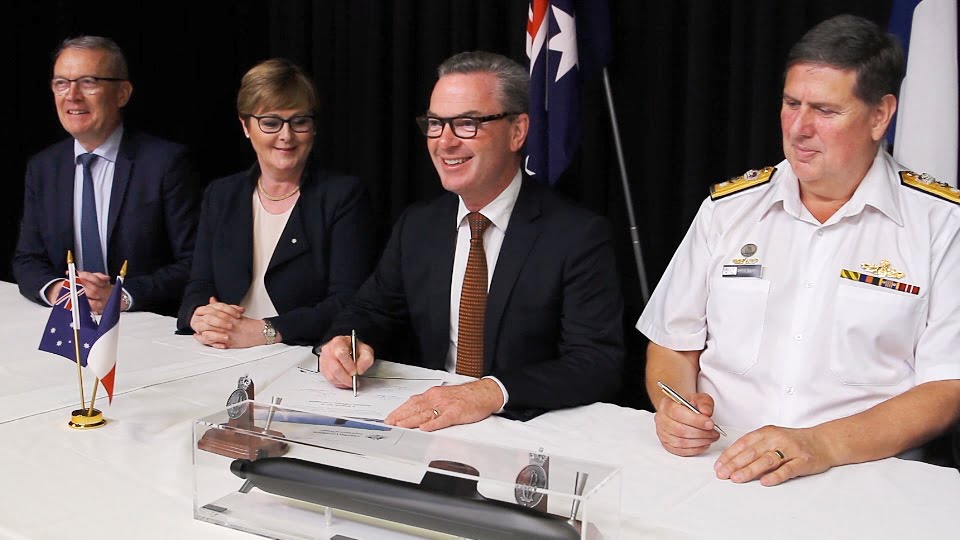The Australian government signed an agreement in 2016 with Naval Group to build a new class of attack submarines.
There have been challenges to reach a partnering agreement, including intellectual property and other issues.
Last month, a core partnering agreement was signed enabling further working relationships to be established essential to shape an effective way ahead.
On February 11, 2019, Naval Group and the Australian government signed the base line strategic partnering agreement (SPA).
According to Jean-Michel Billig, executive vice president of the Future Submarine program and a member of Naval Group’s executive board:
“The aim is to deliver 12 regionally superior subs and ensure national sovereignty by developing the capabilities to build, operate and maintain the new fleet.
“The SPA will serve as the rulebook.
“It defines how the parties will work together over the next 40 to 50 years to achieve this aim, along with their commitments regarding intellectual property, technology transfers, scheduling, and Australian manufacturing capabilities, among other matters.
“Building on the SPA, the next step will be to draft so-called ‘program contracts’ for the different work packages, each complete with technical and financial specifications.”
Australian Government Signs Sub Design Contract with Naval Group from SldInfo.com on Vimeo.
Now the first agreement signed under the SPA has been executed on March 5, 2019.
The Submarine Design Contract is the first contract workscope to be fully executed under the Strategic Partnering Agreement.
The scope for this phase of work includes the ongoing maturation of the Attack Class design as it progresses into the next design phase known as the Definition phase.
This will include the source selection of over 100 critical and main equipment that will contribute to the submarine design solution.
This will mark significant opportunity for Australian industry, which together with ongoing Australian workforce skills development, will play an important part in the growth of the sovereign submarine capability in Australia.
The Submarine Design Contract also includes ongoing preparations for the build of the Attack Class in the Osborne shipyard in South Australia, including ongoing support to Australian Naval Infrastructure (ANI) for the design and build of the Submarine Construction Yard and the ICT systems that will be employed in there….
The first phase of the Submarine Design Contract is worth $605 million and will extend through to 2021.
This is the beginning of the effort but certainly there are significant challenges to be met.
The submarine to be built has never been built; it will leverage the work of Naval Group, formerly DCNS, won both nuclear and conventional submarines.
For this contract to succeed, Naval Group and the Aussies will have to build capacity in Australia which is not there to design, build, and maintain a new class of submarines with the first arriving a decade or more away.
If successful, a French company would have a solid base in Australia from which to operate in the region and beyond.
Greg Sheridan in an article entitled “As threats mount, we must start taking defence seriously,” poses a key challenge inherent in the Australian government’s approach to how it will build the new generation of submarines.
With the French subs, Canberra has chosen the Rolls-Royce of conventional subs but been indifferent to when we get them. The subs are new, big, complex and an “orphan” class, so they will be late, over budget and have huge teething difficulties. The Collins is now an effective sub but it took at least 10 years after the first one was commissioned. Industry sources say we won’t get the first French sub before 2036. That means we don’t get the 12th until about 2050.
We are not, as defence planners sometimes do, preparing to fight the last war. We are preparing for the war after next, with no provision for anything nasty in the meantime. If no one causes us any bother until 2050 we may have a good defence force by then, if all the future generations of governments live up to today’s woolly promises.
What the slow roll out does is to put pressure on the current ASW force being crafted in what we like to call the 0-5 year force structure; the modified army you have with which one has to engage in war and conflicts.
In a discussion in Canberra last August, a very senior ADF officer put the challenge this way:
“We are going to work with ASW with our new air assets, P-8, Triton, and F-35 which will expand the operational capabilities the force will have and we will reshape operations accordingly. And these assets will need to evolve in ways to work with our Collins class submarines, rather than to be tailored to the new combat systems onboard a new class of attack submarines.”
6670-navalgroup-010319-asc-site-fr-cp1

